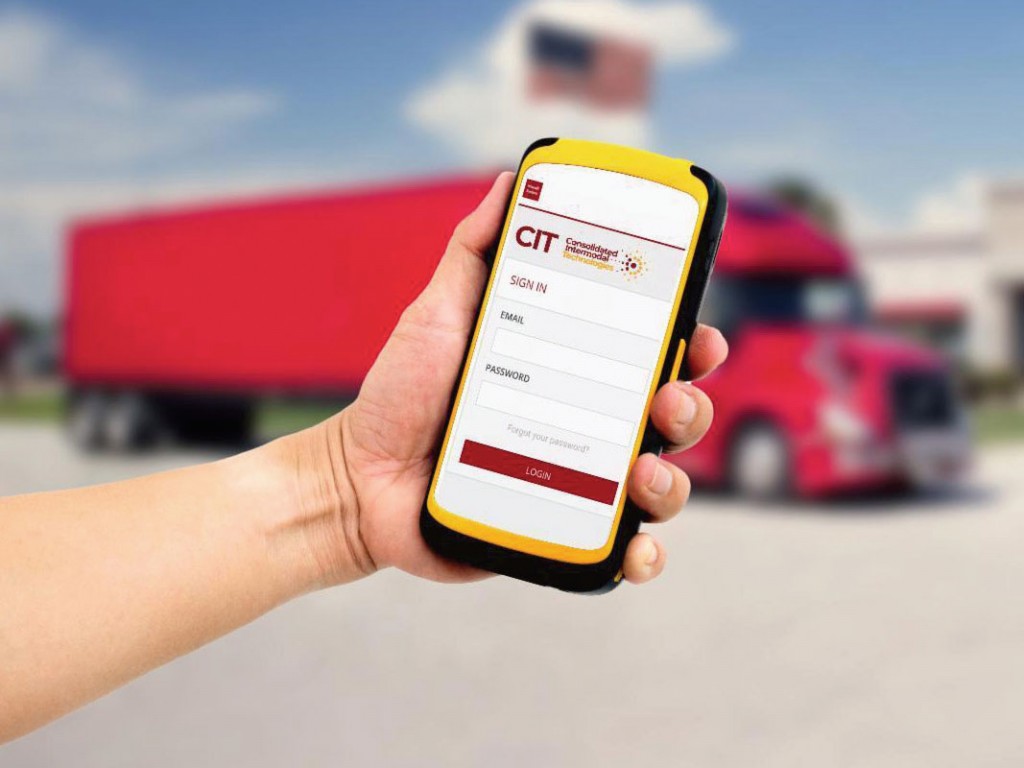Make no mistake about it. The chassis business is tough. Keeping a chassis available and knowing where the chassis is (and has been) and what it will be doing next is difficult to track. Making sure that it is road-worthy requires constant care and attention to detail and doing that all cost effectively is challenging. That’s where CIT comes in.
Back in April, Consolidated Chassis Management (CCM), a well-known neutral chassis pool manager based in New Jersey, unveiled a new division, Consolidated Intermodal Technologies – CIT for short.
CIT (see CITInnovations.com) is out to change that paradigm with a technology initiative built on a robust platform that integrates chassis pool data into customizable user-friendly systems. And almost as importantly, CIT’s products are designed to interface virtually with all existing systems enabling for widescale adoption.
Tom Martucci, the CTO (Chief Technology Officer) of CIT in an interview with the AJOT, explained how CIT’s platform was designed to bridge the gap between “high tech and low tech” that characterizes the problems facing chassis fleet managers. As Martucci explained, “We [CIT] wanted to address some of the pain points” of the chassis leasing business and with the first-hand knowledge acquired in day-to-day operations at CCM.

At its most basic, a chassis fleet manager needs to know where the equipment is located at a given moment (past, present and future); they must keep the equipment road-ready; and must be able to manage payments.
CCM in over a decade of managing its own chassis fleet had used the experience to develop a proprietary platform and a portfolio of functions to address the fleet managers’ basic operational needs and more (see Tolling below). So, when it was decided to open CIT as a standalone division offering technology solutions to the market, the three overarching product offerings were Asset Management, Maintenance and Repair (MandR) and Billing Management.
Since CCM was already operating as a neutral provider, CIT early on identified the potential market for these new digital solutions, including equipment providers, motor carriers, IMCs (Intermodal Marketing Companies), railroad operators, and terminal operators.
Given the diversity of chassis fleet operators and the range of technological expertise managing these fleets, CIT had to build a platform that all players in the niche market could readily deploy without significant investments in upgrades to their existing computer systems or staffing. In a sense CIT was vested with building a digital chassis management system that was still recognizable and intuitively understandable to all the participants in the system – it might be a better mousetrap, but everybody must immediately recognize it is a mousetrap and not something else.

Workable Solutions
All three operating suites share common visibility, flexibility, connectivity and scalability with the end goal of driving out inefficiencies in processes. Some of the CIT innovations can appear quite simple like being able to “manipulate columns” to the order that best suits the individual user’s requirements (rather than using a fixed framed format ) or simply the ability to use multiple types of mobile devices. While other management tools are very unique such as the Toll Management, the end goal is still the same – greater efficiencies.
The Asset Management suite offers Tracking and Monitoring, Reporting and Analysis and the above mentioned Toll Management.
The Toll Management app is an intriguing solution to an underrated problem within the chassis business. The difficulty for the chassis manager of the leased equipment is what happens when a truck rolls through a toll booth and the truck for whatever reason, doesn’t trigger the passage through the toll gate. In that case, the toll booth’s OCR kicks in to identify the motor carrier and as happens often enough, the chassis’ plate ID rather than the truck is recorded. The toll road’s accuracy level in such cases is often wanting and the chassis leasing company is stuck with the undeserved toll bill. And as a result, the administrative problem of verifying, paying and billing the toll bill falls on the chassis company. If handled manually, the procedures can be a nightmare. CIT’s application digitally handles the problem. For example, the system can verify whether the chassis was at the toll in question (which is part of chassis tracking) or whether the toll booth’s OCR generated a misidentification. Further the system can, on confirmation, generate an invoice to the trucking company and payments as necessary. By digitizing the entire process, the chassis manager requires fewer people to handle the inquiries, do it faster and save money (i.e. no late fees) on a business segment dogged by chronic misinformation.
Perhaps the most difficult segment of a chassis fleet manager’s business is M&R (maintenance and repair). Keeping the chassis on the road is the key to successfully maintaining fleet performance – to paraphrase New England Patriot’s coach Bill Belichick – ‘the greatest ability in fleet management is availability. And if there was a postscript to the maxim, it would be ‘availability at a reasonable cost’. That’s what CIT’s system is designed to deliver.
CCM’s years of experience in managing their own chassis fleet enabled CIT to develop a system that leverages data into a cost efficient management system.
There are many elements to keeping a fleet working but basically it falls into two categories: maintenance and repair. While maintenance is largely a routine, the need to respond to damage and execute a repair can come at any moment. If each operation exists in a job silo, the amount of work invested in tracking, delivering and paying for parts, tracking actual work done, billing and related expenses can be overwhelming.
By understanding what constitutes routine maintenance (and not – exception management) CIT was able to build a “model” that codifies and digitizes each feature in the system. It enables the fleet manager to recognize patterns in job-processing and recognize where the redundancies occur. The system is highly configurable. Alerts can be built and programmed into the reporting, not only to improve M&R efficiencies, but also to help keep chassis on the road by heading off potential problems before they occur. The end result of the process is an improvement in accuracy throughout the system – an important feature for securing reimbursements and managing cash flow and parts inventory.
Although it is still early days for CIT, the division has brought “plug and play” to the chassis business which is no small feat. But as a work in progress, CIT is already looking into expanding the division’s reach. Considering how fast the technology is changing with new sensors supplying inputs, ubiquitous mobile devices, Big Data and even the rise of EVs, CIT’s decision to be the technology company for the chassis segment of the trucking industry is well timed.



